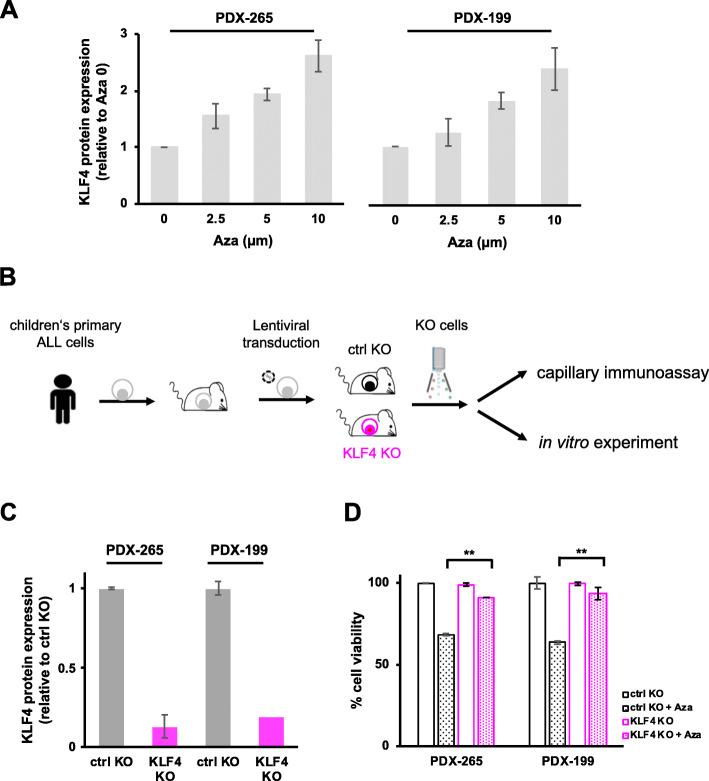Fig. 6.
Azacitidine-induced cell death depends on KLF4. a PDX-265 and PDX-199 cells were treated with different concentrations of azacitidine (Aza) for 48 h. KLF4 protein expression was analyzed by capillary immunoassays, and β-Actin served as a loading control. One representative analysis of 2 independent experiments is shown. KLF4 expression normalized to β-Actin was plotted as fold change relative to the expression of respective untreated cells (Aza0). Mean ± SD of 3 independent experiments is shown. b Experimental procedure: B-ALL PDX cells were lentivirally transduced with Cas9, sgRNA and reporter expression vectors (Supplementary Figure S12B) and injected into NSG mice to generate ctrl KO (black) and KLF4 KO (pink) PDX cells. Mice were sacrificed once full blown leukemia had developed, and marker-positive populations were enriched by flow cytometry by gating on the recombinant markers (mTaqBFP for Cas9, mCherry for the sgRNAs and GFP for the reporter construct) and the cells were subjected to capillary immunoassays and in vitro culture. c KLF4 protein levels in ctrl KO or KLF4 KO PDX-265 and PDX-199 cells were analyzed by capillary immunoassays. Mean ± SEM for KLF4 expression according to 2 experiments normalized to ß-Actin is plotted as the fold change relative to the expression of the control KO cells. d PDX B-ALL ctrl KO cells and KLF4 KO cells were treated with 2.5 μM Aza in vitro for 48 h and cell viability was measured by flow cytometry. Viability was normalized to that of nontreated cells. The mean ± SEM of duplicates is shown. ** p < 0.01 by two-tailed unpaired t test

